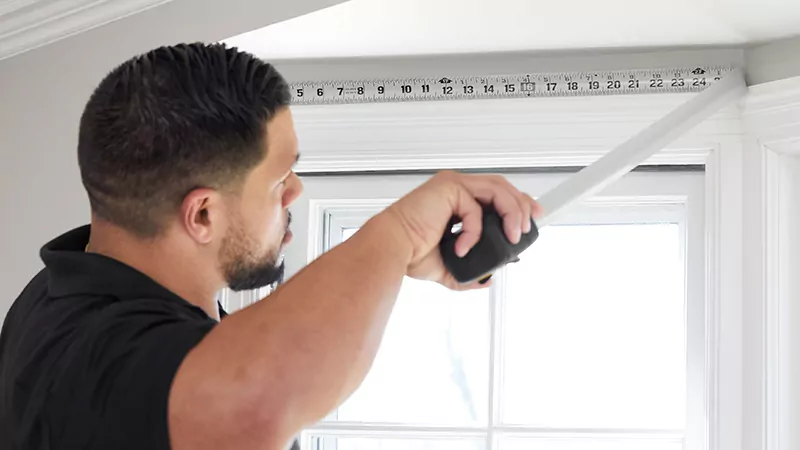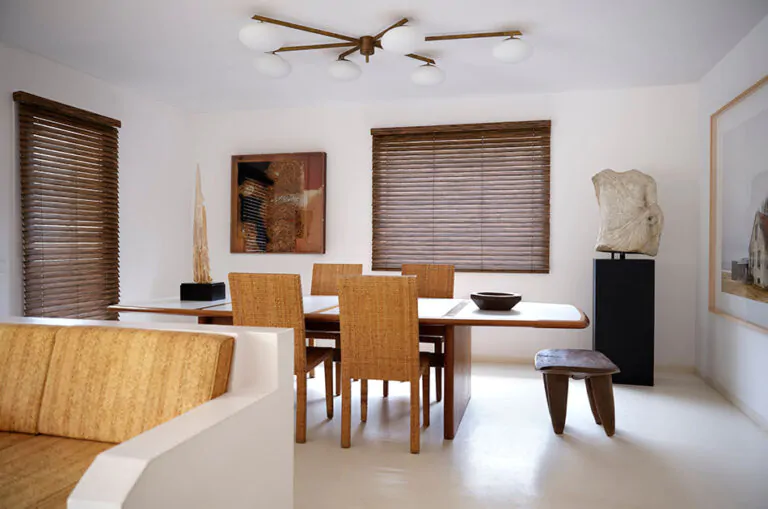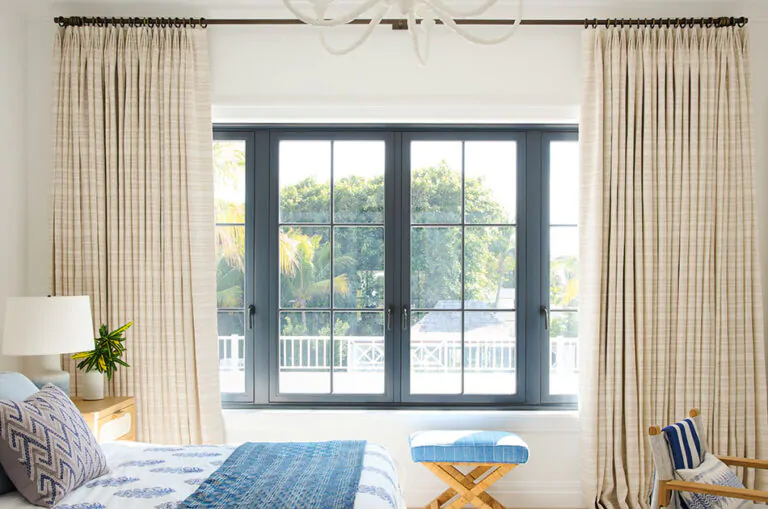
How to Hang Curtains with Crown Molding
If you’re considering drapery for your windows, in addition to deciding on the material and hardware, you’ll also need to figure out how to hang them. While there are best practices for hanging curtains, the right way for your space will depend on your unique situation. One key factor that influences the best way to hang your curtains is whether your window or ceiling has crown molding. How to hang curtains with crown molding will differ from how you hang curtains on a window without any type of crown molding.
To learn the best practices for how to hang curtains with crown molding, first make sure you understand what crown molding is. Then, dive into the best practices for hanging curtains based on your particular situation.
What Is Crown Molding?
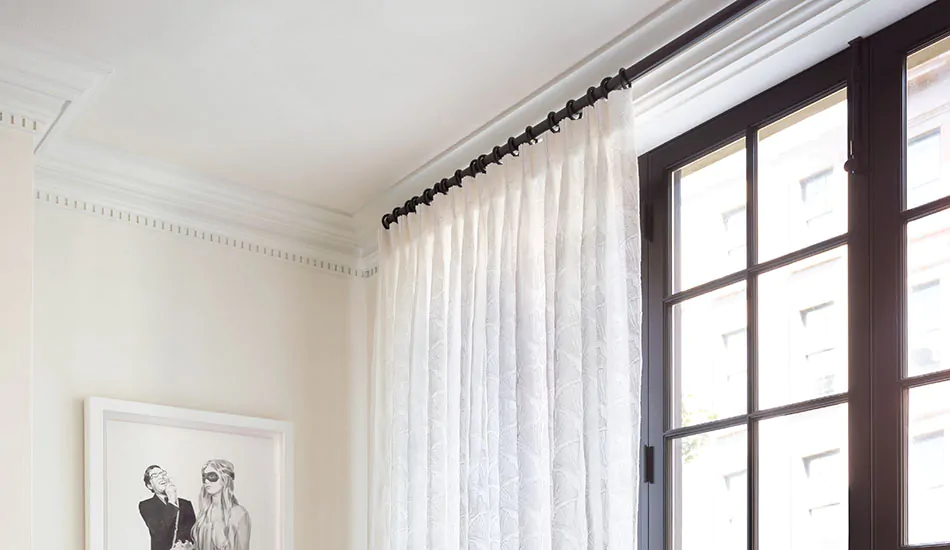
Crown molding is traditionally defined as the trim that separates the walls and the ceiling. However, crown molding can also be used to define any trim that adorns the tops of other architectural elements, such as windows, doors and cabinets.
When it comes to how to hang curtains with crown molding, it’s important to first identify which type of crown molding your room has:
- At the ceiling
- On the window trim
How to Hang Curtains with Crown Molding at the Ceiling
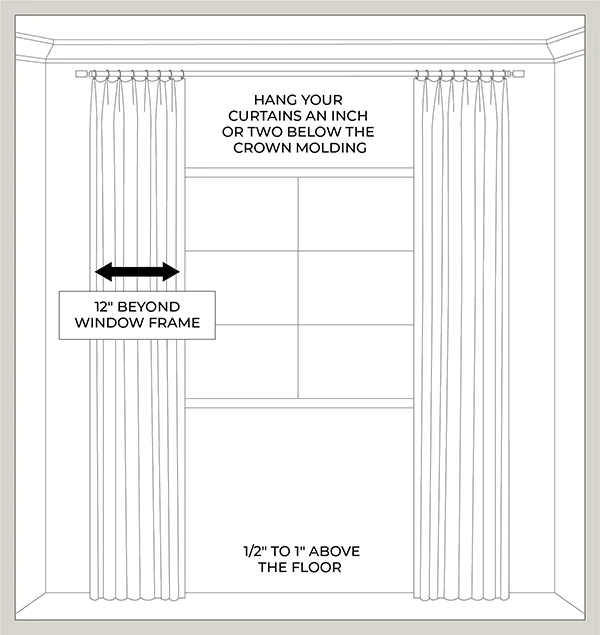
The best practices for how to hang curtains with crown molding at your ceiling are pretty straightforward. If you have crown molding at the ceiling, typically, the best place to hang your curtains is an inch or two below the crown molding. Hanging your curtains high above the window also creates the illusion that you have larger, more dramatic windows and a taller ceiling.
The only exception to this rule is if you have very tall ceilings. Then, it’s best to hang curtains about 8 to 10 inches above the window frame to prevent them from going so high they lose their impact and functionality.
Keep in mind as well, it’s not a good idea to install the curtain rod directly into your crown molding. Not only will it damage your crown molding, but the curtain rod may not be as secure as if it was installed directly into the wall. This is because the crown molding alone does not provide a good anchor for your brackets. The molding is typically only attached to your wall and ceiling using construction adhesive and/or finishing nails, neither of which will provide the support your curtains need.
How to Hang Curtains on Windows with Crown Molding
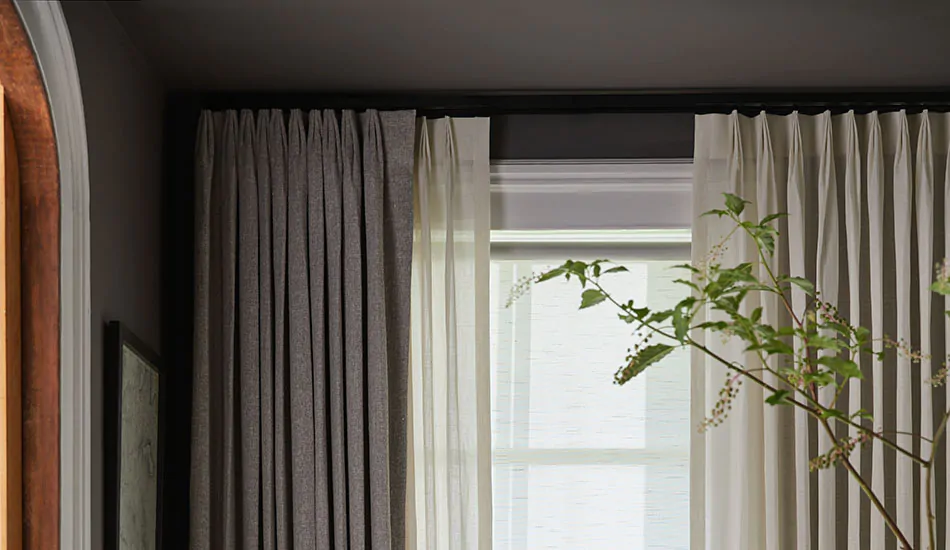
How to hang curtains on windows with crown molding will depend on your preferences. There are two main ways to approach this situation:
- Hang your curtains high and wide so the trim is exposed whenever your drapes are open
- Consider a drapery alternative to keep your decorative crown molding visible at all times
Hang Your Drapery High & Wide
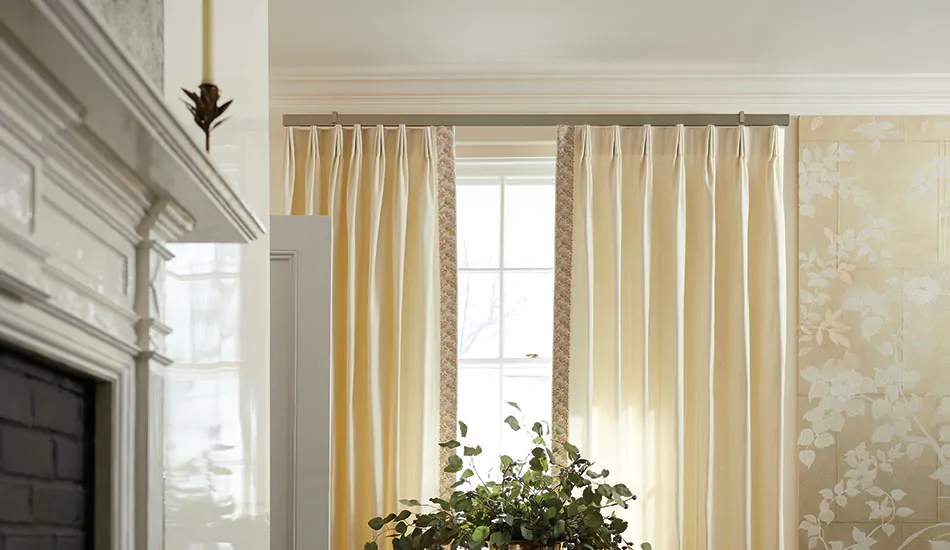
When it comes to how to hang curtains on windows with crown molding, the best approach is to go high and wide, so your beautiful window crown molding is on display whenever the drapes are open.
For the best effect, hang your curtains with these best practices in mind:
If you also have crown molding at your ceiling, follow the best practices above for how to hang curtains with crown molding and hang them just below the molding. Make sure that the curtain rod extends far enough off your wall to not catch the window trim.
If you do not have crown molding at your ceiling, then you have some options for how to hang curtains on windows with crown molding based on your exact situation:
- Hang your curtains just below the ceiling or ceiling-mount them for a tall, dramatic look for your drapery, ideal for shorter or average-height ceilings.
- Hang your curtains halfway between the top of your window trim and the bottom of the ceiling, plus an inch or two to avoid dissecting the space exactly in half, ideal for average-height or taller ceilings.
- Hang your curtains about 8 to 10 inches above the window trim, ideal for very tall cathedral ceilings.
How to Keep Your Window Crown Molding Visible
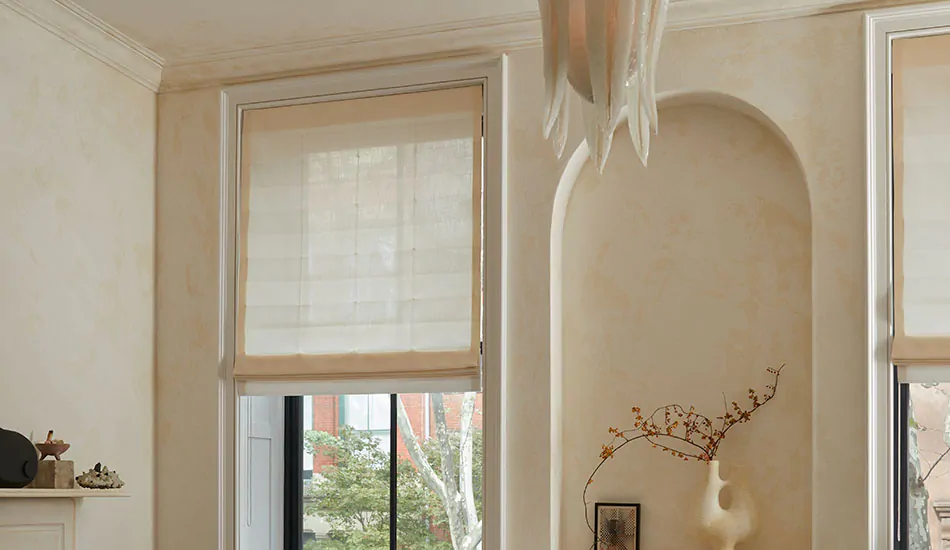
While you can mount your drapery just below the crown molding, across the window trim, this is typically not ideal, as it will likely make your windows and walls look shorter.
The best option for keeping your decorative trim exposed is actually to forego drapery altogether and consider an alternative.
With shades and blinds inside-mounted in your window frame, you can maintain a permanent view of your window’s trim and crown molding, while still getting a look you love.
Some ideal options to replace drapery include:
- Roman Shades: For the warmth and luxe feel of drapery, with greater functionality and more compact design, try Roman Shades. When inside mounted in your window frame, Roman Shades won’t hinder the view of your window trim. Plus, they’re easy to raise and lower throughout the day as your privacy and light needs change.
- Woven Wood Shades: Made from natural, eco-friendly fibers like bamboo, reeds and grasses, Woven Wood Shades give you similar functionality to Roman Shades, but with a more boho look and feel.
- Roller & Solar Shades: For a more minimalist, sleek look, Roller and Solar Shades provide exceptional functionality and come in a variety of patterns and colors to suit your aesthetic style.
- Wood Blinds: The warmth of real wood is a great alternative to drapery as it still gives you a sophisticated, luxe look as well as excellent functionality.
Other Design Factors to Consider
If you’re set on drapery and have decided how to hang curtains with crown molding, you’re ready to consider other factors that will affect your drapery design.
Stack & Fullness

The stack refers to how much space the drapery takes up when fully drawn open and the fullness of the drapery refers to how lush and full it looks when drawn closed. You’ll need to take both into account when deciding on the right width for your curtains and the hardware. Typically, adding at least 12 inches on each side of your window frame for the hardware will ensure the drapery can be pulled fully off the window glass for a clean, unhindered view. Plus, wider curtains also help make the window look larger and wider.
Length

The length of your curtains will depend on how high you hang your curtains as well as your preferences for how they look at the floor. You have three main options for your curtain length:
- Float, where the curtains hover just above the floor, ideal if you’ll be frequently opening and closing your windows.
- Break, where the curtains kiss the floor with about 1 to 2 inches of excess fabric, ideal for disguising uneven floors.
- Puddle, where the curtains create a puddle on the floor, with 3 to 6 inches of excess fabric, ideal for disguising uneven floors and creating an elegant, luxurious look.
Install Best Practices for How to Hang Curtains
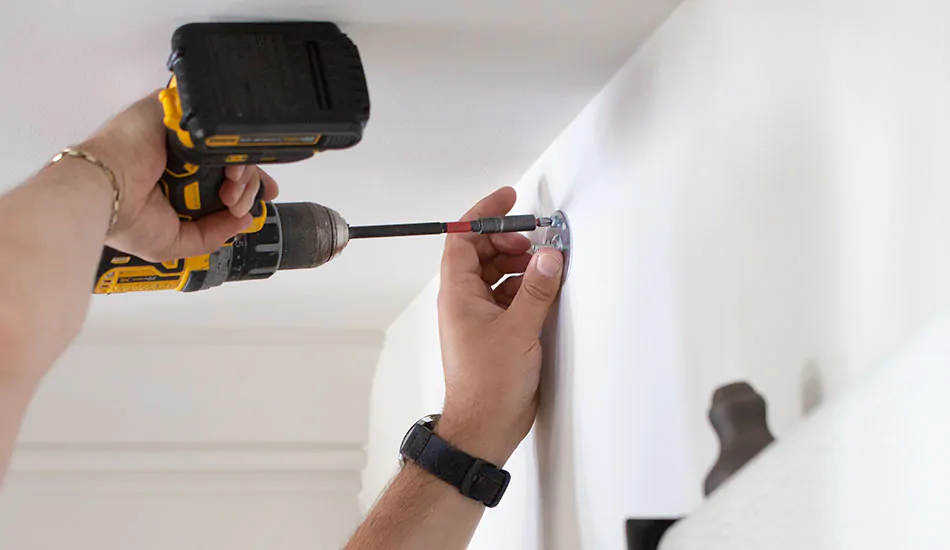
Once you’ve identified how to hang curtains with crown molding in terms of width and height, you can consider installation. If you plan on installing the curtain rod yourself, always consult the hardware’s installation instructions first, before starting your project.
For a brief install overview, follow these steps:
- Step 1: With a pencil and measuring tape, mark the overall width of your curtain rod.
- Step 2: Determine where the curtain rod brackets should be placed and mark the points with a pencil. Bracket placement will depend on your curtain rod’s overall width as well as what type of hardware you’re using (a track system or rod and rings).
- Step 3: Install your curtain rod or track system. Installing the brackets in the wall usually only requires a basic Phillips screwdriver. A level will also help to make sure your rod or track system is installed evenly.
- Step 4: Hang your curtains, according to the type of drapery and drapery hardware you’ve chosen.
Prefer to avoid a DIY install? Expert help is available when you choose drapery and hardware from The Shade Store.
Get Expert Help for Your Project
Now that you know the best practices for how to hang curtains with crown molding you need to ensure your project is executed in the best way possible. When you choose custom drapery from The Shade Store, you can rely on our team of window treatment professionals. Request a complimentary measurement for your drapery to get the height, width and length just the way you want it — without lifting a finger.
